Introduction
The BioLite Headlamp 750 (MSRP $99.95, 5.3 ounces / 150 g) is a performance-oriented USB-rechargeable headlamp with a few features that attempt to set it apart from the crowded rechargeable headlamp field. Its long battery life, 750-lumen max output, constant brightness mode, and pass-through charging feature might make it interesting to some. It’s a bright headlamp, but is more expensive than most headlamps targeted to ultralight backpackers, and certainly heavier. However, its brightness and battery life may be attractive to guides, winter backpackers, or bikepackers. Notably, it has a known flaw in the primary button which many users, including myself, have run into.
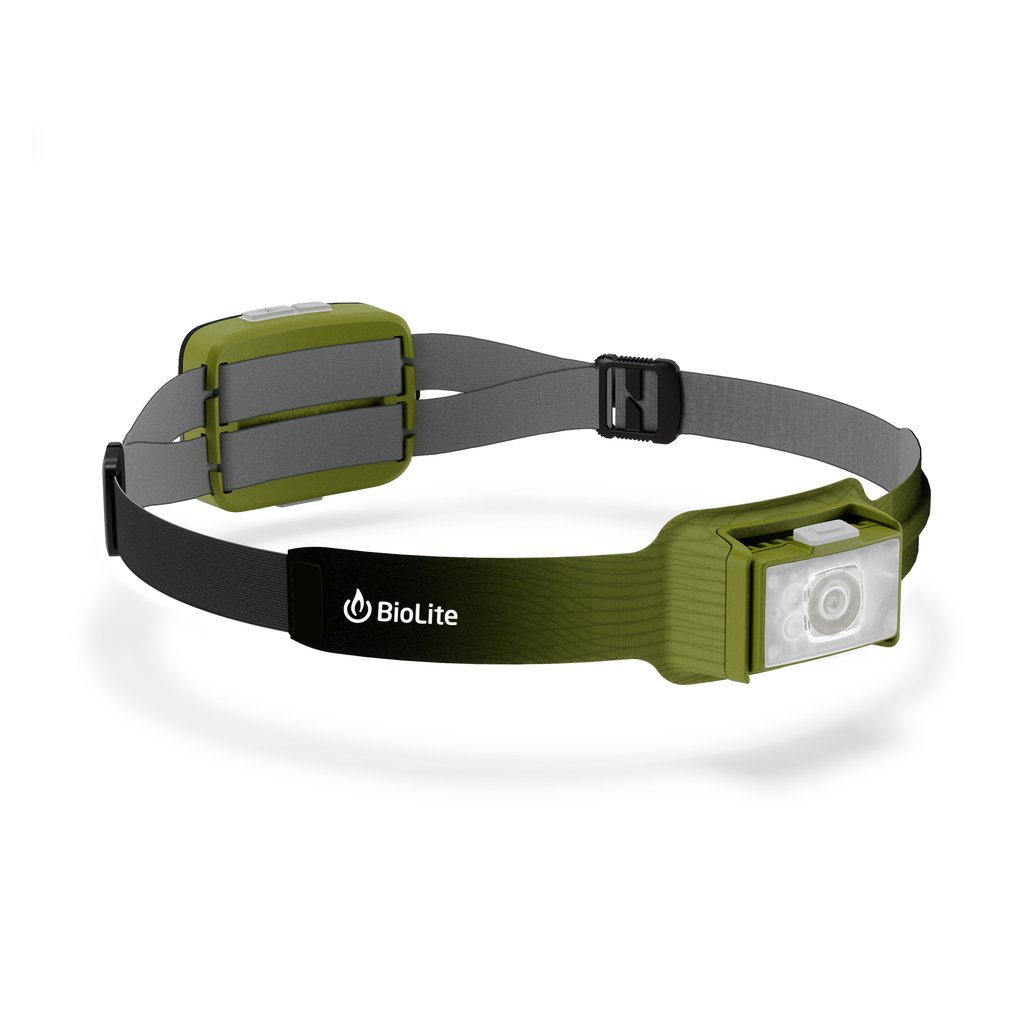
Highlights
- MSRP: $99.95
- weight: 5.3 ounces (150 g)
- beam distance: 142 yards (130 m)
- burn time: 7 hours high / 150 hours low
- battery size / type: 3000 mAh li-ion micro-USB rechargeable
- water resistance rating: IPX4
- tiltable front panel
- dimmable red, white, strobe, and burst modes
- dimmable rear red light with solid and strobe modes
- 4 LED battery indicator lights
- pass-through charging capability with included micro-USB cord
- constant mode – no auto-brightness regulation
- digital lock
Testing Context
I occasionally guide during the shoulder seasons on off-trail, expedition-style trips. The circumstances that crop up on those trips – short days combined with the delays associated with moving a varied group of people over difficult terrain – had me searching for a more richly-featured, brighter, longer-lasting rechargeable headlamp than my current go-to for personal trips. I wanted a headlamp I could trust to handle all the unexpected situations that sometimes crop up when guiding. Because my guiding kit is, by necessity, slightly more heavy and bulky than my personal trip kit, weight and bulk were secondary considerations behind utility, comfort, and reliability.
I knew the BioLite HeadLamp series was comfortable – the hallmarks of the series are sculpted, intentional blends of soft and hard components, molded fits, and battery/bulb separation for front/back balance – so I gave the BioLite HeadLamp 750 a try on a recent 12-day backpacking trip in central Colorado. Although it was a late-summer trip with plenty of light, I still pushed past sunset, venturing up and down some steep terrain on uneven footing after dark, and so was able to give the BioLite Headlamp 750 enough of a test to warrant this First Looks review. Unfortunately, my testing was somewhat limited by a serious flaw in the headlamp’s design – one I’ll get into in the Durability section of this review below.
First Impressions
Utility
The BioLite HeadLamp 750 has all the features you’d expect from a headlamp in this size/brightness category – multiple light modes, standard (for headlamps) waterproof rating, and a digital lock so the battery doesn’t drain in your backpack. The backing stays flush against the forehead while tilting the bulb up and down within the housing, though this feature doesn’t operate as smoothly or with as much range as I’d like (the BioLite HeadLamp 200, by contrast, excels here).
The battery is huge and long-lasting, and the spot/flood hybrid mode is a joy to walk in the dark with. Four LED lights indicate battery levels, which is a major improvement over the flashing-bulb system found in some other headlamps, including the other two headlamps in this series. Rear visibility features are somewhat unique and might be especially attractive to bikepackers, mountain bikers, or the kinds of trail runners/adventure racers who routinely find themselves operating at night.
But the primary draws to the BioLite HeadLamp 750 are its so-called pro features: a thirty-second brightness burst feature, a constant-brightness feature, and a pass-through charging feature.
Brightness Burst Feature
The brightness burst feature is probably the least useful of the three (for me). Pushing a rear button gives the user a blast of maximum lumens for thirty seconds even if the brightness is set at a dim setting. After the thirty seconds is over, the brightness returns to the previous setting. I suppose the point here is to give a user just enough light to navigate something tricky (a scrambling move, perhaps) or perform a minor camp chore, but I don’t really see the need for routine backpacking. Adjusting an adjustable headlamp isn’t much of a hassle, and how many complicated tasks that require maximum lumens only take thirty seconds?
Constant Brightness Feature
The constant brightness feature exists in a middle ground between useful and possible gimmick. Many (most?) headlamps slowly dim their output over time for efficiency and maximum battery life. That’s why as a headlamp battery drains from use it gets fainter and fainter until it winks out.
The BioLite HeadLamp 750 is no different on its regular setting, but it does give users the option to engage Constant Mode, which delivers maximum brightness until the battery is totally dead. This takes battery life from a claimed 8.5 hours to a claimed 4 hours on medium brightness and from a claimed 7 hours to a claimed 2 hours on maximum brightness. I could see this being useful on final, technically complicated pushes to camp, or perhaps in wilderness first-aid situations. Testing the accuracy of battery life claims and lumen claims is beyond the scope of this review, but I can vouch for the fact that the Constant Mode works as advertised and got me into camp over an after-dark talus scramble with a feeling of bright security that I appreciated.
Pass-Through Charging Feature
Pass-through charging is the feature on the BioLite HeadLamp 750 I think is most likely to be useful to outdoor professionals, winter backpackers, or other users who need the security of long-battery life. The BioLite Headlamp 750 has 100% functionality while charging from a battery pack. It comes with a 4-foot micro-USB cable designed to run from the headlamp to a pack or pocket – wherever a user might keep their external battery pack.
This feature has all kinds of utility. It’s easy enough to become tired or distracted and forget to charge a headlamp, only to find it dying at the moment of greatest annoyance. Pass-through charging eliminates that problem entirely. Likewise, situations that crop up unexpectedly – like straggling clients or wilderness first-aid scenarios – will have less stress with the assurance that a steady stream of light is available even if the scenario drags on into the small hours of the morning.
I tested the feature briefly and it works as advertised. I had larger plans in mind that were cut short by a hardware malfunction, which I’ll discuss in the Durability section.
Interestingly enough, I’ve confirmed that many headlamp brands, including Fenix and Petzl, have similar pass-through charging features that aren’t marketed as heavily as the feature on the BioLite HeadLamp 750 is.
Comfort
A headlamp of this size and weight is only going to be so comfortable. BioLite carries over design features from its other headlamps – lycra backing, ergonomic elements, balanced weight, and an intuitive tension adjustment system – to max out the comfort rating for a headlamp of this mass. But that being said, the BioLite HeadLamp 750 isn’t the headlamp you want for long reading sessions in a sleeping bag – especially because of the battery placement. And as handy as pass-through charging and long battery life is for lengthy excursions, I wouldn’t necessarily want it banging around on my head if I was running, either.
Durability
Three-quarters of the way into my testing trip, I fished my headlamp out of my fanny pack where I keep it for quick access and discovered that it wouldn’t turn on (I’d just charged it fully). After fiddling with it for a bit, I realized that the front button wasn’t clicking on and off – it seemed to be stuck in place. With nothing to lose, I poked at the button mechanism through the rubber cap for a few minutes with the edge of my Swiss Army Knife bottle opener and managed to get it to turn on and off once. After that, the headlamp got stuck on strobe mode.
3,000 mAh worth of strobing headlamp wasn’t something I wanted to deal with for the back half of my backpacking trip, so I pried the rubber button off the top to see what I could see. The button mechanism was indeed stuck, and nothing I could do short of prying it loose from the electronics would turn my light off. I did so, and my test came to an end.
Luckily I was with a partner who had a functioning headlamp, and I was hiking a well-marked trail in a season with plenty of light to get my miles in. What could have been a bad situation was merely annoying. But this was an extremely disappointing situation given that I was searching for a headlamp that would be reliable in possibly stressful scenarios.
Upon returning home and doing some research, I discovered I wasn’t the only person to have this issue. Here’s one of several comments and responses I found on the BioLite website.
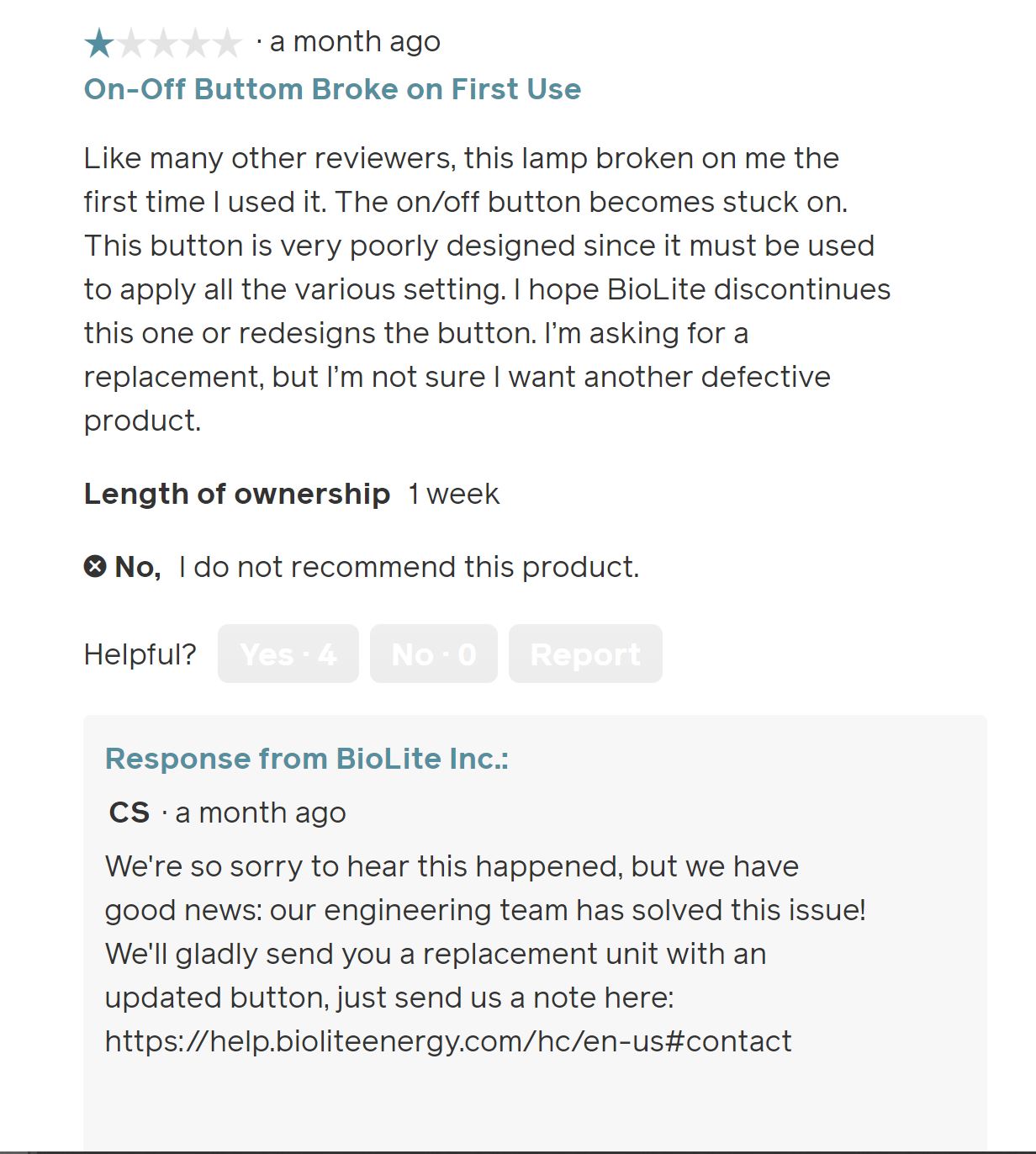
I was ready to write my experience off as a freak accident – maybe I crammed the headlamp a little too tightly into my pack – but a pattern like this is not a good sign: especially for a product designed with so-called pro features and technical terrain navigation in mind.
To BioLite’s credit (as shown in their response above), this known issue appears to have been resolved. What is not known (buyer beware) is how many models on retail shelves right now have the old button design, or what the incidence (%) of failure might be.
Photos
Note: readers will notice that in these photos, the front button is missing. The photos were taken after I’d attempted and failed a field repair on the BioLite HeadLamp 750.
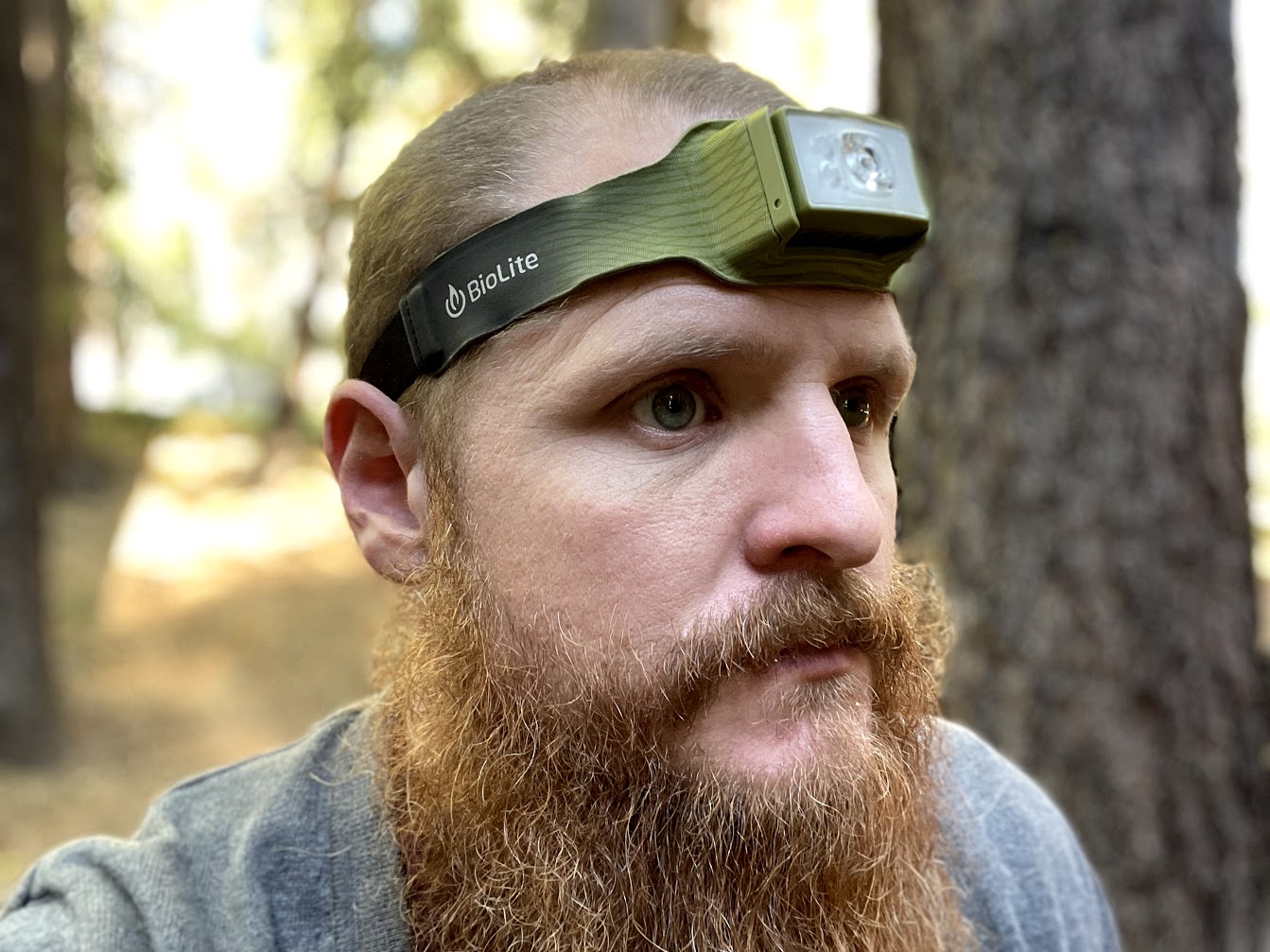
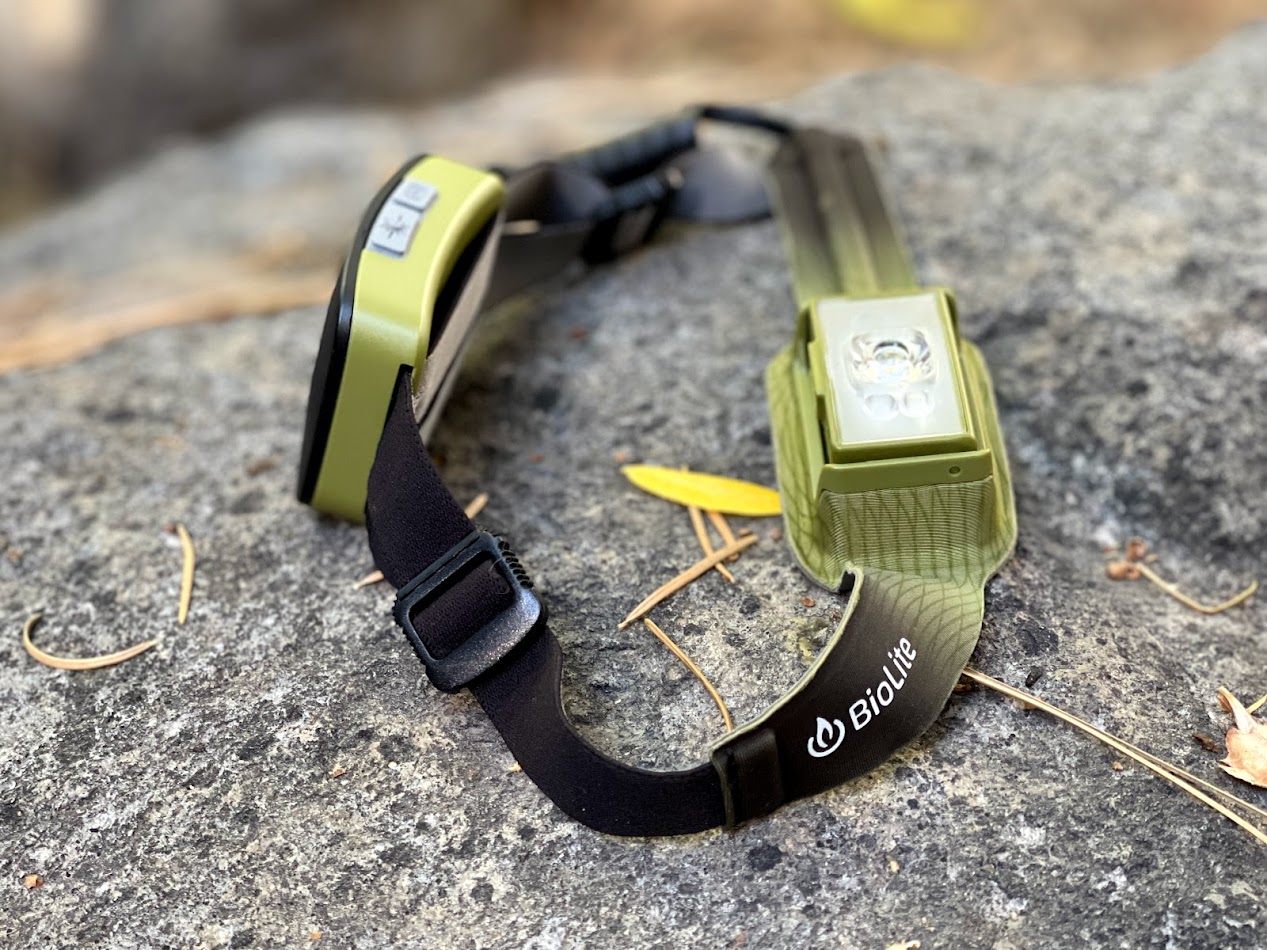
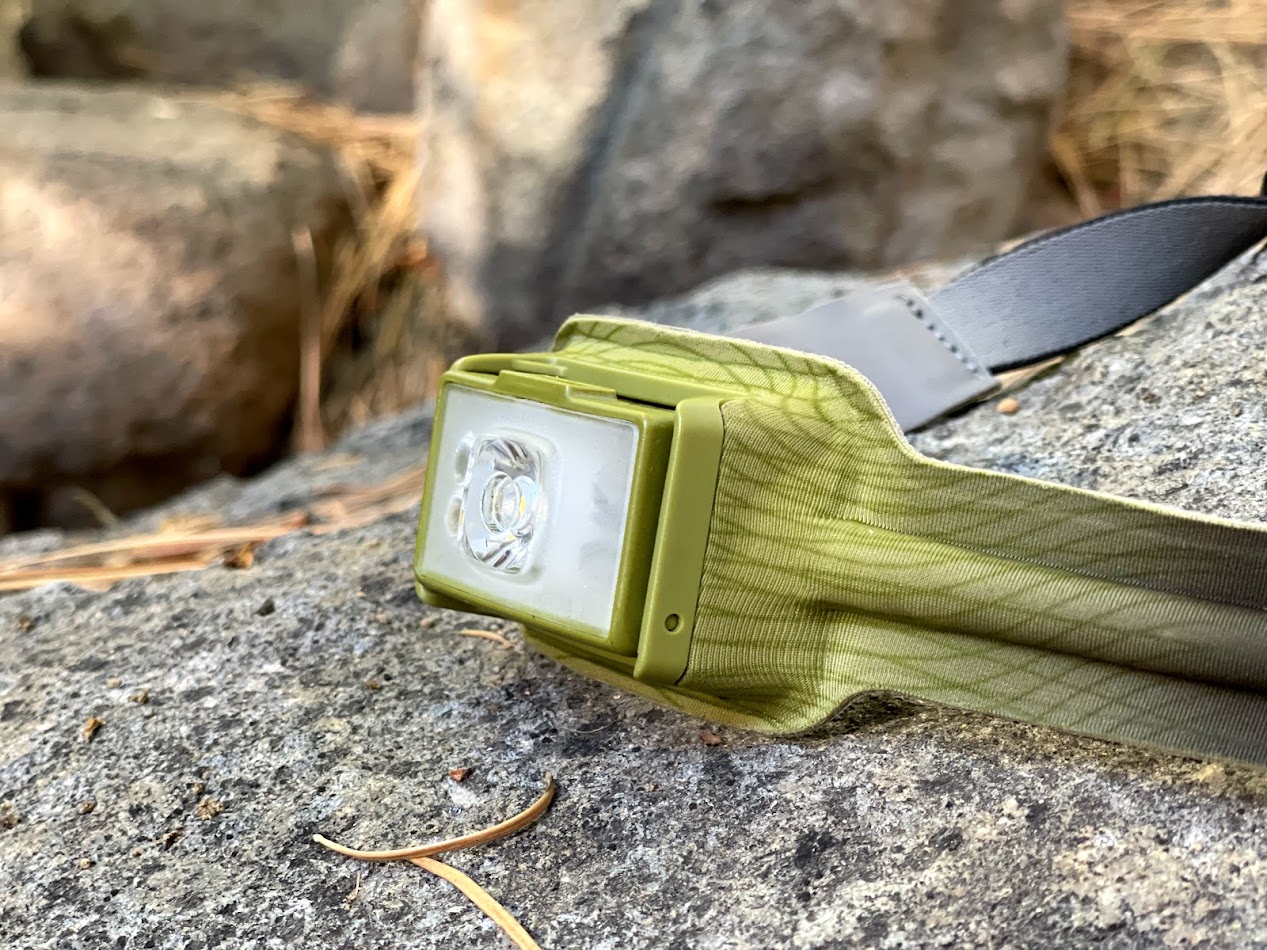
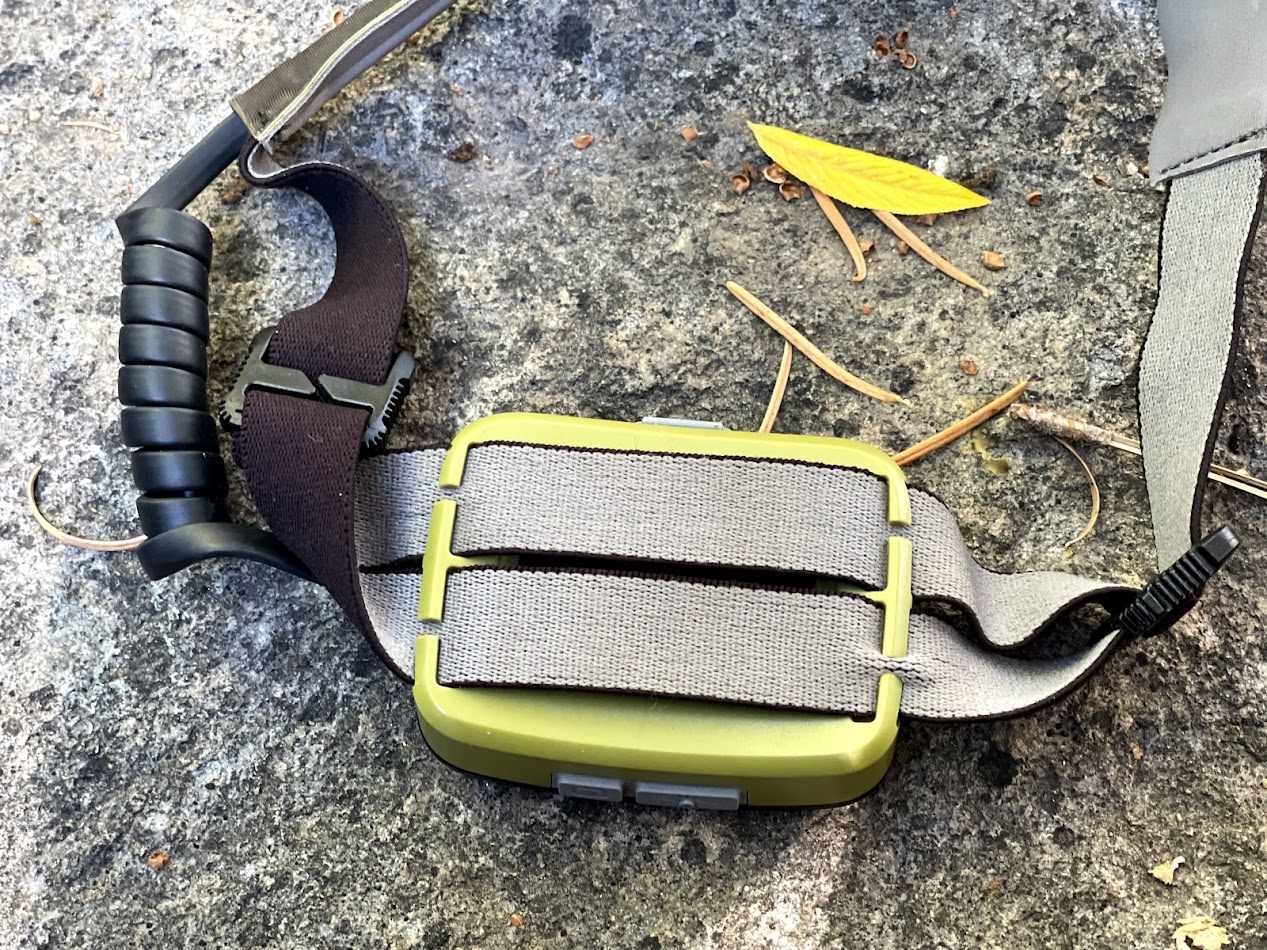
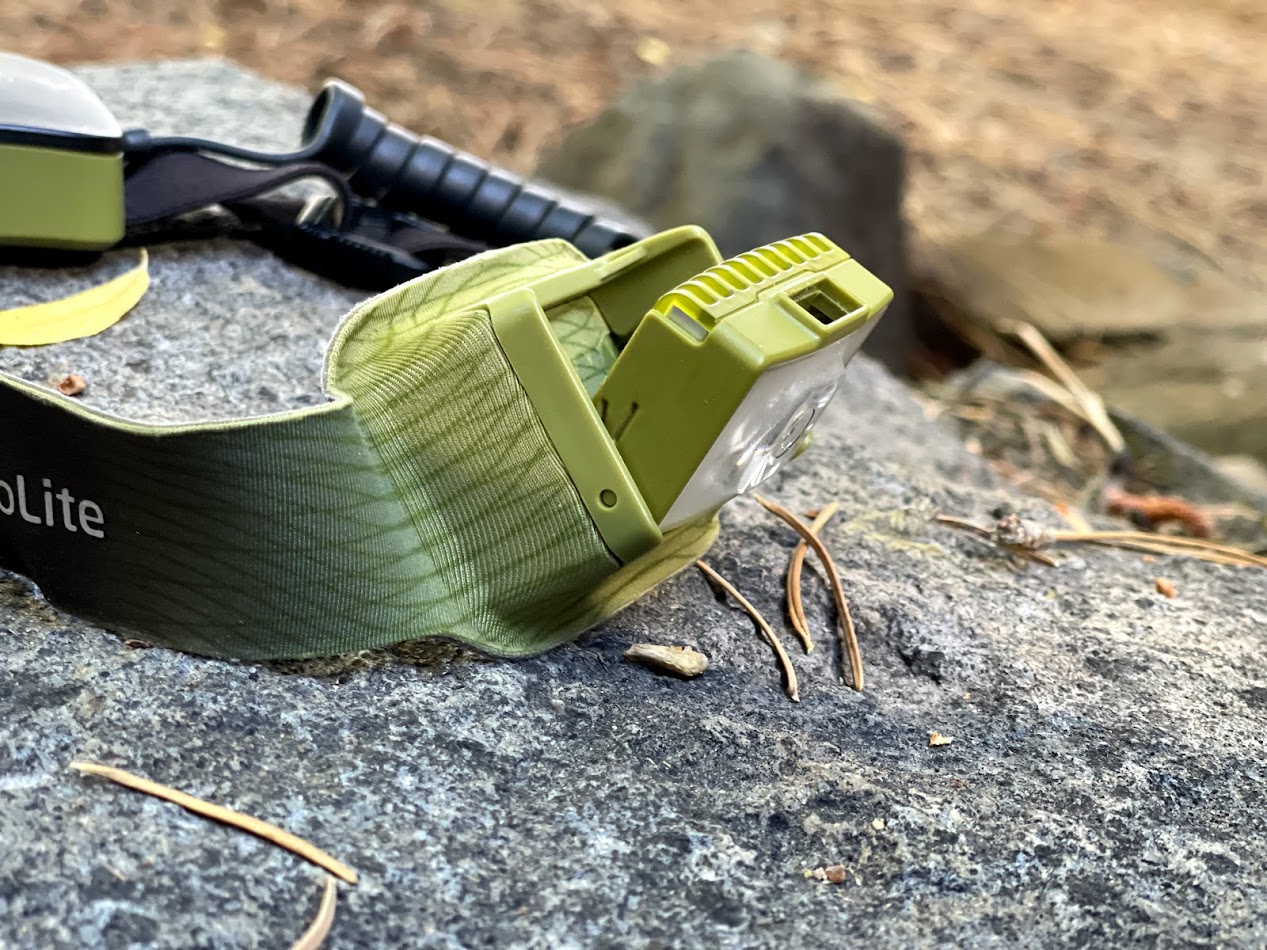

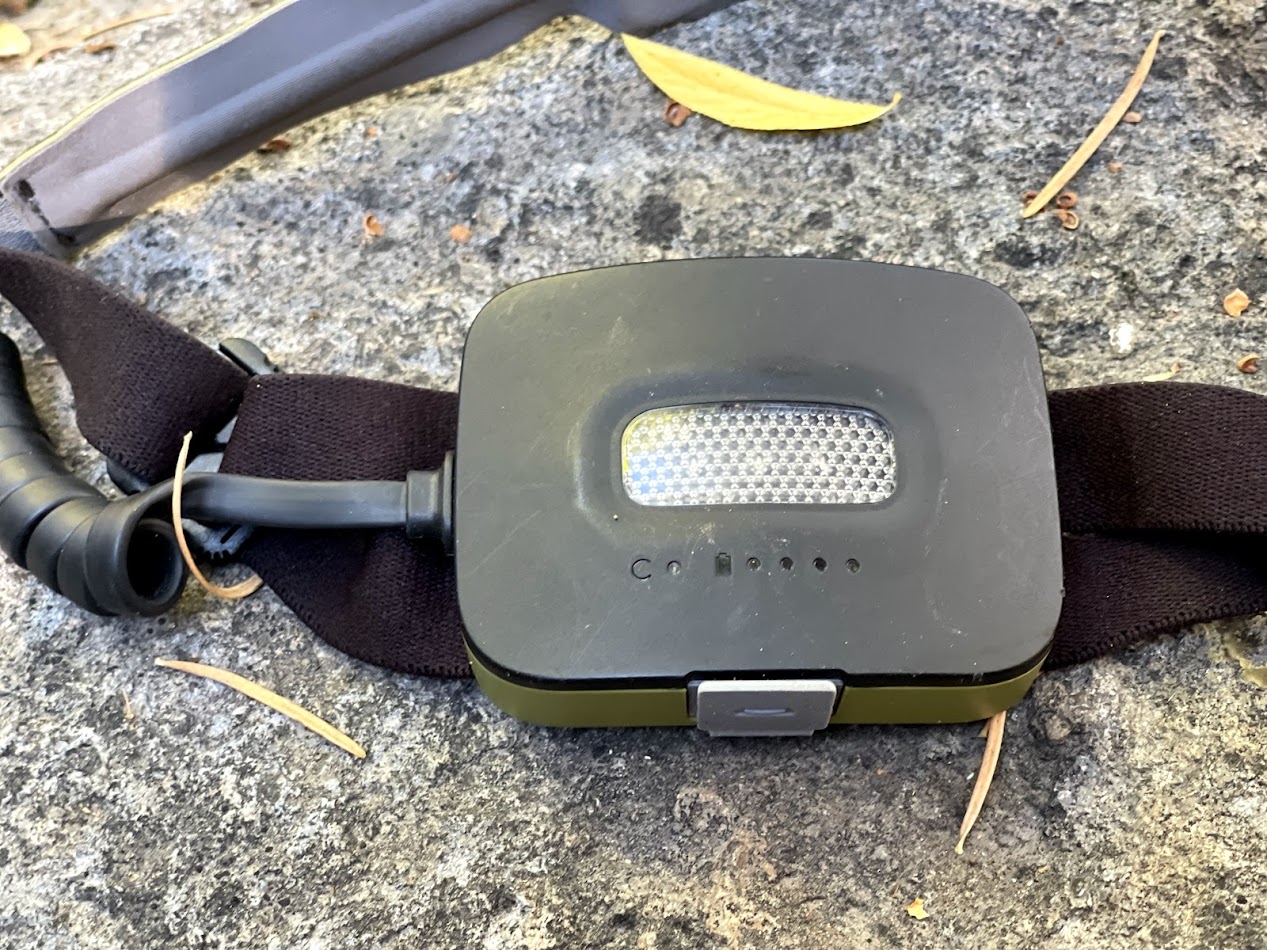

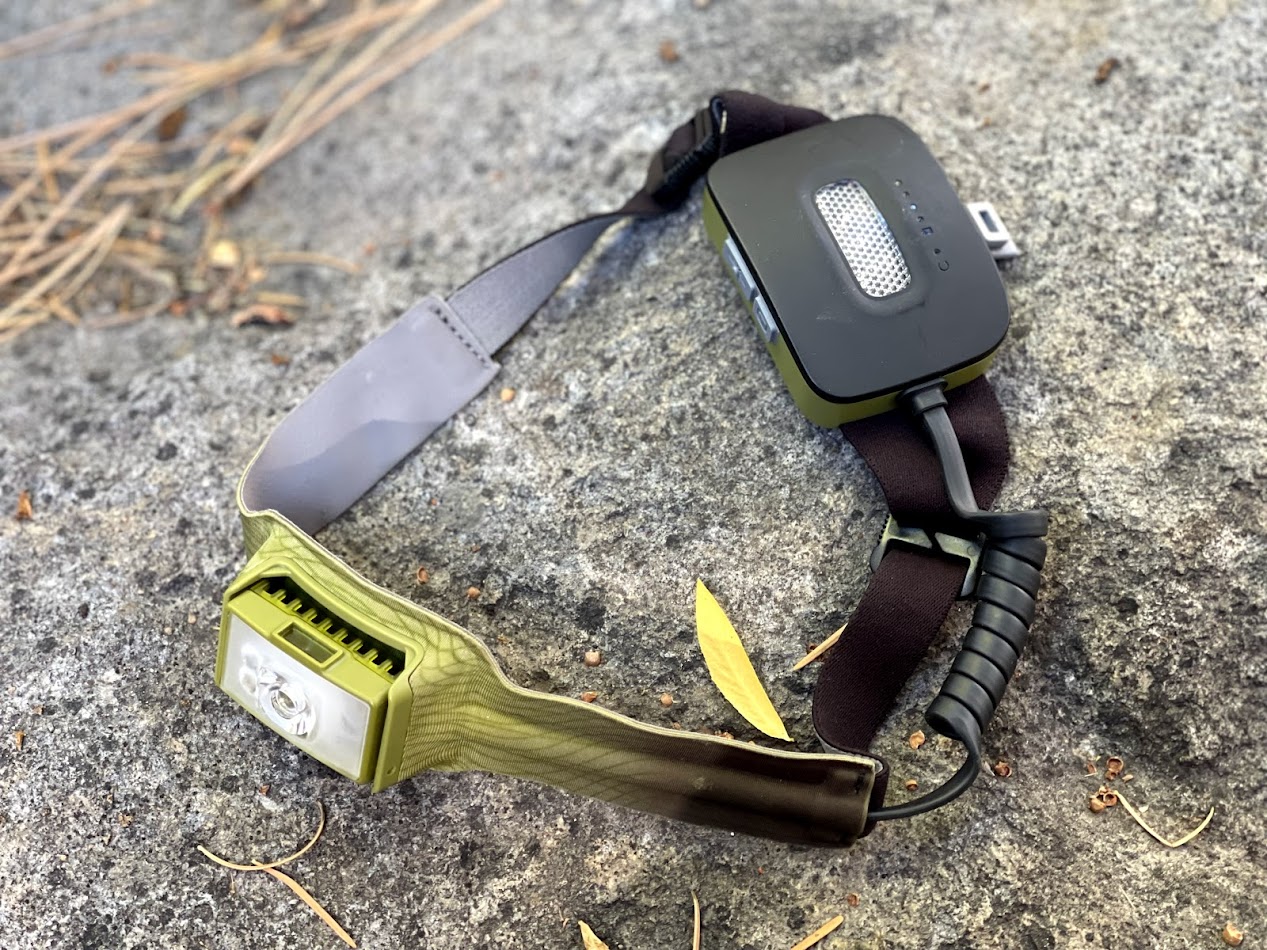
The Takeaway
It’s hard to talk about any of the BioLite HeadLamp 750’s positive features – and there are many – when it has a fatal flaw that could endanger safety.
I’m not sure what the BioLite team has done to fix the button issue, and I’m not sure if the products currently sitting on shelves or in distribution warehouses have been replaced. As of this writing, most of the responses from BioLite on their website are about a month old. While the BioLite HeadLamp 750 has several interesting features that would be useful to users in extreme conditions – and the other two products in this line are excellent – the 750’s proven unreliability would make me hesitant to bring it into the field in situations where I’d be counting on it. At least until I knew that all the defective models currently floating around had been replaced – and that the new models didn’t suffer from the same issue.
The Competition
The BioLite Headlamp 750 doesn’t differentiate itself very much from its competition. If we look at rechargeable headlamps offering 750+ lumens of brightness, consider the following:
- The Petzl Swift RL is brighter (900 lumens) and lighter (3.5 oz / 99 g), but a little more expensive ($119.95), and has a smaller battery (2350 mAh).
- The Petzl Nao is incredibly comfortable while climbing and running, but its harness weight comes at a cost, because the Nao is heavier (6.5 oz / 184 g), has a smaller battery (2650 mAh), and is much more expensive ($199.95).
- The Fenix HM61R is cheaper ($84.95), brighter (1200 lumens), has a larger battery (3400 mAh), more water-resistant (IPX8), and slightly lighter (5.0 oz / 142 g). Editor’s note: this is a very compelling headlamp spec – if you need a bright, powerful, long-lasting, stable light – consider this one.
- The LEDLenser MH11 is brighter (1000 lumens), has a much longer max beam distance (320 m), but is more expensive ($159.95) and a little heavier (6.3 oz / 179 g).
Related Content
- read Andrew’s review of the BioLite HeadLamp 200
- browse more recommended headlamps in the BPL Gear Shop
DISCLOSURE (Updated April 9, 2024)
- Product mentions in this article are made by the author with no compensation in return. In addition, Backpacking Light does not accept compensation or donated/discounted products in exchange for product mentions or placements in editorial coverage.
- Some (but not all) of the links in this review may be affiliate links. If you click on one of these links and visit one of our affiliate partners (usually a retailer site), and subsequently place an order with that retailer, we receive a commission on your entire order, which varies between 3% and 15% of the purchase price. Affiliate commissions represent less than 15% of Backpacking Light's gross revenue. More than 70% of our revenue comes from Membership Fees. So if you'd really like to support our work, don't buy gear you don't need - support our consumer advocacy work and become a Member instead.
- Learn more about affiliate commissions, influencer marketing, and our consumer advocacy work by reading our article Stop wasting money on gear.




Home › Forums › BioLite Headlamp 750 Review